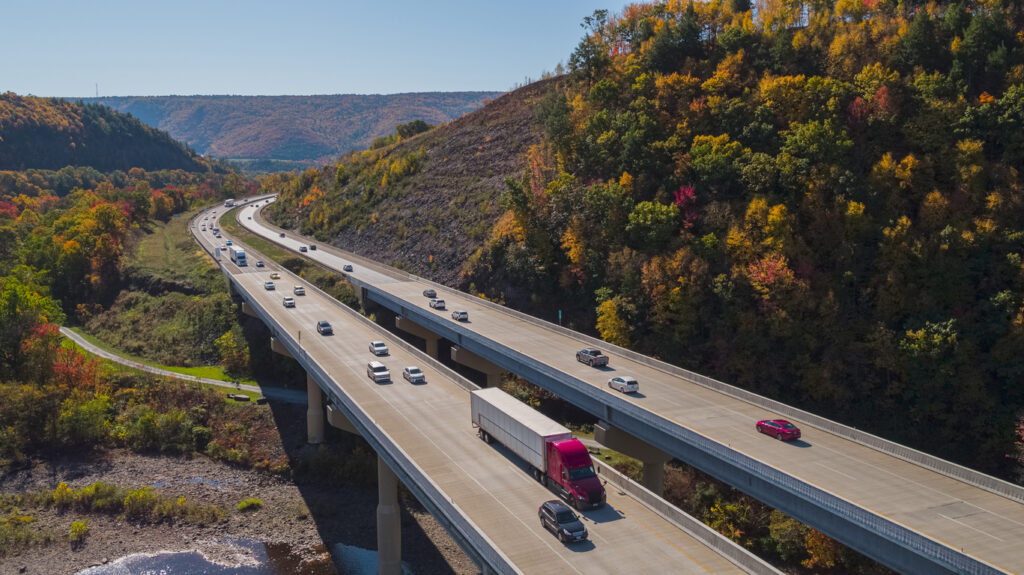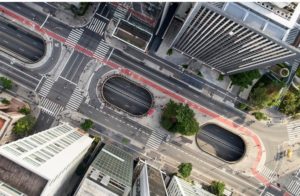Maintaining highway infrastructure sustainably
Safe, well-maintained highway infrastructure is an essential piece of healthy economy. Not only are highways essential for commuting and travel, but they allow for the movement of goods and services.
Despite the role highway infrastructure plays in supporting both day-to-day to life as well as the medium and long-term health of an economy, nearly 40% of it remains in fair, poor, or very condition according to the latest Infrastructure Report Card.
It begs the question: How can transportation authorities maintain highway infrastructure sustainably?
The modern challenges of highway infrastructure
Maintaining a good state of repair for highway infrastructure and assets have always been an expensive and complex task. Unfortunately, it’s only become more complex as time has gone on.
The key challenges transportation asset managers face include:
Aging highway infrastructure
Much of our current infrastructure was built in the 1970s. Highway, rail, and water systems all saw massive investments. But this infrastructure only has a useful lifespan of 40 to 50 years. We are now past the point of needing replacements or renewals.
Aging infrastructure is more prone to breaks, inefficiencies, and safety hazards, which in turn requires more frequent maintenance.
As highways, roads, and bridges degrade over time, they become less reliable, resulting in more frequent disruptions, longer travel times, and higher risks of accidents. And with so much of highway infrastructure in poor or very poor condition, it puts a strain on decision-makers who must identify the highest priority investments.
Climate change
Aging infrastructure is already a major concern, made worse by climate change. Extreme heat can soften pavement, making it more vulnerable to vehicle damage. Severe storms can cause flooding, further damaging roads and bridges.
Since infrastructure from the 1970s wasn’t designed to handle today’s climate challenges, transportation asset owners must reassess performance and lifecycles
Lack of resources
Maintaining highway infrastructure has always been costly, but the problem is worse now due to aging assets and climate change. Supply chain disruptions and high inflation have driven up the costs of materials like asphalt, concrete, and steel. As a result, asset managers must stretch their budgets to meet baseline objectives.
There is also a shortage of skilled labor for construction and maintenance. Finding funding and having the capacity for necessary maintenance are critical challenges.
Information silos
Highway infrastructure spans thousands of kilometers, and transportation authorities divide it into territories. While this approach helps manage large networks, it can create information silos.
These silos lead to communication gaps and inconsistencies. Different territories may develop their own methods, priorities, and standards. This fragmentation makes it difficult to implement cohesive strategies for long-term planning and investment. It can slow decision-making, reduce resource allocation efficiency, and impact asset reliability across the network.

Maintaining highway infrastructure with cross-asset capabilities
Because aging highway infrastructure is made more vulnerable by climate change, and there is a finite amount of funds and skilled labour to conduct essential maintenance work, identifying priorities is essential.
Not only must we address immediate safety concerns, but where are the opportunities to build resilience and improve performance in the long-term?
Balancing short-, medium-, and long-term benefits amidst budget and labour constraints can be done when transportation authorities implement asset management solutions with cross-asset capabilities.
What are cross-asset capabilities?
Cross-asset capabilities, also known as integrated asset management, allows an organization to manage all of its assets using a single platform.
For highway infrastructure asset management, this means that pavements, arterial roads, drains, bridges, street lights, and road signs are all assessed as a whole rather than disparate elements.
Benefits of cross-asset capabilities
When a transportation organization adopts an asset management solution with cross-asset capabilities, they can expect to receive benefits such as:
Increased asset visibility: With every asset, including their current condition, maintenance history, size, and material, in a single solution, organizations can start making decisions with a better overview of how their assets are performing.
Data integration: In addition to the all the asset data being in a single solution, this can be enhanced further by integrating financial and regulatory data. In doing so, organizations can strategically plan around the resources available and what’s required of them that aligns with asset performance.
Holistic risk management: Along with the asset, financial, and regulatory data, organizations can assess the overall risk of their highway infrastructure assets. Operational risk, environmental risk, and financial risk are all interconnected. And managing them as one can more effectively mitigate any vulnerabilities.
Resource optimization: When assessing all assets’ condition, performance, risk, and financial data in a single solution, priorities reveal themselves through trends. This comprehensive view enables organizations to allocate resources more efficiently, targeting areas with the greatest need within the constraints.
Long-term cross-asset capabilities
While there are many things to be gained by cross-asset capabilities, organizations must also consider the scope their asset management solution provides.
Enterprise Asset Management (EAM) and Asset Performance Management (APM) solutions have cross-asset capabilities, but Asset Investment Planning (AIP) solutions combines cross-asset management with long-term perspectives.
AIP solutions can simulate up to 100 years in the future, projecting the long-term benefits and tradeoffs of any investment scenario.
In the context of highway infrastructure, an organization could model three scenarios:
– Scenario 1: Increased investment in regular maintenance and early repairs.
– Scenario 2: Major upgrades and refurbishments to the highest-traffic points in the network.
– Scenario 3: Deferred maintenance in the short term to meet regulatory requirements with a major overhaul in the 20 years.
Based on the simulation results, Scenario 1 shows that regular maintenance significantly extends the lifespan of pavements, reducing the long-term costs and improving safety.
Scenario 2 reveals that targeted upgrades enhances the overall network performance long-term despite the steep initial investment.
Meanwhile, Scenario 3 demonstrates that deferring maintenance leads to higher costs and risk both in the immediate future and in 20 years.
Seeing the potential outcomes, the organization can implement a combination of Scenarios 1 and 2, allocating resources for ongoing maintenance and refurbishment while also targeting strategic upgrades with the greatest ROI on risk mitigation and long-term performance.
By leveraging cross-asset capabilities and a long-term view, organizations can make informed decisions that balance immediate needs with strategic goals.

Maintaining highways sustainably with Direxyon
Direxyon’s Asset Investment Planning solution offers organizations a user-configurable and transparent way to take a long-term view of all their assets.
By integrating long-term planning and investment simulations with our Asset Investment Planning (AIP) solutions, you can make data-driven decisions that enhance asset management, reduce costs, and ensure the resilience of your highway infrastructure.



